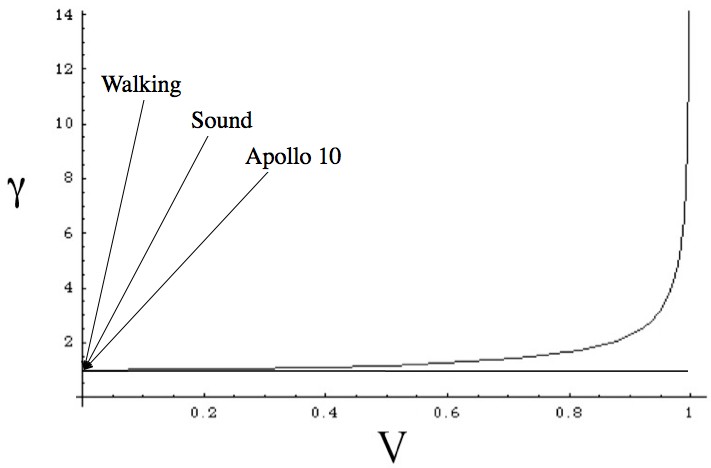Physicist: Nopers! Although that would be an amazingly cool super-weapon.
Physics can be pretty complicated, but what makes physics different from lesser sciences, like Calvinball, is that physics has rules that are absolute. While the consequences can sometimes be difficult to predict (technically, platypi are a direct result of fundamental physical laws), the rules themselves tend to be pretty straightforward. In the case of relativity there are two big starting rules:
#1) All of physics works exactly the same whether you’re moving or sitting still. So, in absolutely every way that counts, there’s no difference.
#2) The speed of a passing light beam is always the same.
There are a lot of bizarre things that fall out of that second rule (generally in not completely obvious ways). Among them is the fact that the equations Newton figured out for momentum and energy, and
, are actually only approximations. In particular, the equation for momentum is actually
. That
describes a lot of relativistic phenomena. It’s very close to one for low speeds, which makes
(which is why Newton never noticed it). The greater the speed, the bigger
becomes, and the more “
” looks like a bigger mass. But keep in mind; that speed is relative. You can only see that “increased mass” in something else, because you can never move relative to yourself.

Values of gamma vs. fraction of light speed. Being close to 1 at low speeds means that the “error” from relativistic effects is very small. Apollo 10 is the fastest (Earth relative) any human has ever moved.
So finally, here’s the point:
So long as the particle or object in question isn’t currently slamming into anything that’s moving differently (or “relatively”), then you can just apply rule #1. No matter how fast or slow something is moving, it will always behave exactly the same way it would if it were sitting still. So, if you accelerate a rock to 99.99999999% of light speed (or thereabouts), then it will do exactly what a rock at 0% of light speed does: be a rock. A fast rock, sure, but it wouldn’t suddenly do anything a regular rock wouldn’t. I’m not knocking rocks, they’re fine and all, it’s just that they’re not black holes, which are terribly exciting.
It turns out that gravity is way more complicated than Newton first proposed. The same set of theories (special and general relativity) that accurately predicted that fast objects will behave more massive from our “stationary” perspective, also predicted a whole mess of weird things about gravity. Including the fact that gravity itself always obeys rules #1 and #2. So if a thing isn’t a black hole when it’s sitting still, then it isn’t a black hole when it’s moving.







14 Responses to Q: According to relativity, things get more massive the faster they move. If something were moving fast enough, would it become a black hole?